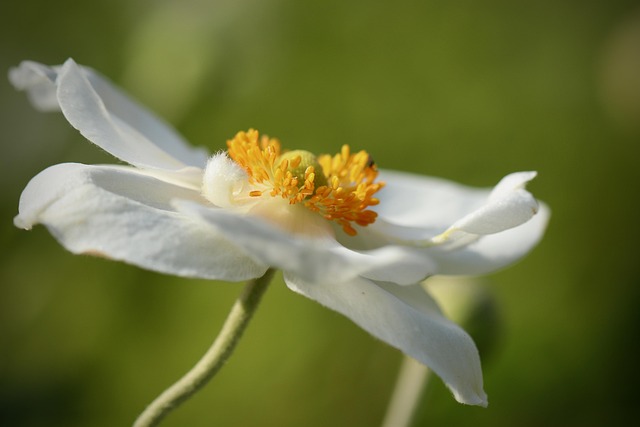Designing a low-maintenance garden combines strategic planting choices, efficient upkeep techniques, and innovative solutions. Incorporate drought-tolerant plants and perennial flowers to reduce water usage and minimize replanting. Mulching controls weeds, conserves moisture, and enhances aesthetics. Automatic irrigation systems provide precise watering without waste. Replace high-maintenance lawns with alternatives like gravel paths or low-care turf varieties, or explore hardscaping ideas such as paved areas and retaining walls. These methods create beautiful, sustainable gardens suitable for busy individuals and regions facing water scarcity.
Designing a beautiful garden doesn’t have to mean hours of maintenance. Discover the secrets to creating a stunning, low-maintenance oasis with these expert tips. From choosing drought-tolerant plants and implementing effective mulching techniques to exploring native landscaping and automating irrigation, we’ll show you how to minimize effort while maximizing your garden’s allure. Embrace easy care without sacrificing aesthetics with these practical strategies for a hassle-free outdoor space.
- Choosing Drought-Tolerant Plants and Perennial Flowers
- – Benefits of drought-tolerant plants
- – Popular perennial flowers for easy care
- – Planting strategies for maximum efficiency
Choosing Drought-Tolerant Plants and Perennial Flowers

When designing a low-maintenance garden, selecting drought-tolerant plants and perennial flowers is a strategic move towards easier care. These plants are well-adapted to survive with minimal watering, making them ideal for busy individuals or those seeking sustainable landscaping options. Perennials offer a vibrant solution by blooming year after year, reducing the need for constant replanting. Incorporating native plant species can also be advantageous as they are naturally accustomed to local climate conditions and often require less maintenance.
Additionally, implementing mulching techniques is an effective way to suppress weeds, conserve soil moisture, and enhance the overall aesthetics of your garden. Automatic irrigation systems can be installed to provide targeted watering where needed, ensuring plants receive adequate hydration without excessive waste. For lawn alternatives, consider low-maintenance turf varieties or even hardscaping ideas like paved paths, retaining walls, and rock gardens to create visually appealing outdoor spaces with minimal upkeep.
– Benefits of drought-tolerant plants

Designing a garden with drought-tolerant plants offers numerous advantages for those seeking low-maintenance gardening solutions. These plants are perfectly adapted to survive and thrive in dry conditions, reducing the need for frequent watering. This is particularly beneficial for individuals with busy lifestyles or those living in regions experiencing water scarcity. By incorporating drought-tolerant species like perennial flowers, you can create a beautiful and easy-care garden that minimizes your environmental impact.
Perennial flowers not only provide vibrant colors and textures but also contribute to sustainable landscaping. They outlive annuals, eliminating the need for constant replanting. Additionally, proper mulching techniques, combined with automatic irrigation systems, further enhance weed control and water conservation. Native plant landscaping is another excellent strategy, as these plants are already accustomed to local conditions, reducing maintenance requirements and supporting biodiversity. Low-maintenance lawn alternatives, such as hardscaping ideas featuring stone paths or pavers, also contribute to a stress-free garden setup.
– Popular perennial flowers for easy care

Creating a low-maintenance garden doesn’t mean sacrificing beauty or vibrancy. In fact, incorporating drought-tolerant plants and native species can enhance biodiversity while simplifying your upkeep routine. Perennial flowers like lavender, sedum, and coneflower are popular choices due to their hardy nature and ability to thrive with minimal care. These plants not only add color and texture but also attract beneficial insects and pollinators.
When designing your garden layout, consider the strategic use of mulching for weed control. A thick layer of organic mulch can significantly reduce weeding efforts and conserve moisture in the soil, further benefiting your drought-tolerant plants. Additionally, automating your irrigation system with smart sensors ensures that your garden receives the right amount of water without waste. For a low-maintenance lawn alternative, explore options like artificial grass or native ground covers, which require no mowing or fertilizing. Incorporate hardscaping elements such as pathways and retaining walls not only for aesthetic appeal but also to reduce high-maintenance areas, complementing your easy-care plant selections.
– Planting strategies for maximum efficiency

Designing a low-maintenance garden involves strategic planting that maximizes efficiency and minimizes upkeep. One effective strategy is integrating drought-tolerant plants, which require less water and are better equipped to handle varying weather conditions. Perennial flowers are another excellent choice for easy care; they return year after year, reducing the need for constant replanting.
Additionally, employing mulching techniques for weed control can significantly save time and effort. A layer of organic mulch not only suppresses weeds but also conserves moisture in the soil, reducing the frequency of watering. Native plant landscaping is another sustainable approach that supports local ecosystems while requiring less maintenance. Automating irrigation systems with smart timers ensures your garden gets just the right amount of water, while low-maintenance lawn alternatives like gravel paths or drought-resistant grasses further reduce upkeep. Hardscaping ideas, such as stone patios and retaining walls, add structure and visual interest without demanding regular care.
Designing a low-maintenance garden doesn’t mean sacrificing beauty or diversity. By incorporating drought-tolerant plants and perennial flowers, along with effective mulching techniques, native plant landscaping, and automated irrigation systems, you can create a stunning outdoor space that requires less care. Explore hardscaping ideas to add structure and interest while reducing the need for frequent lawn maintenance. With these simple tips, achieve a balanced and harmonious garden that complements your lifestyle.
